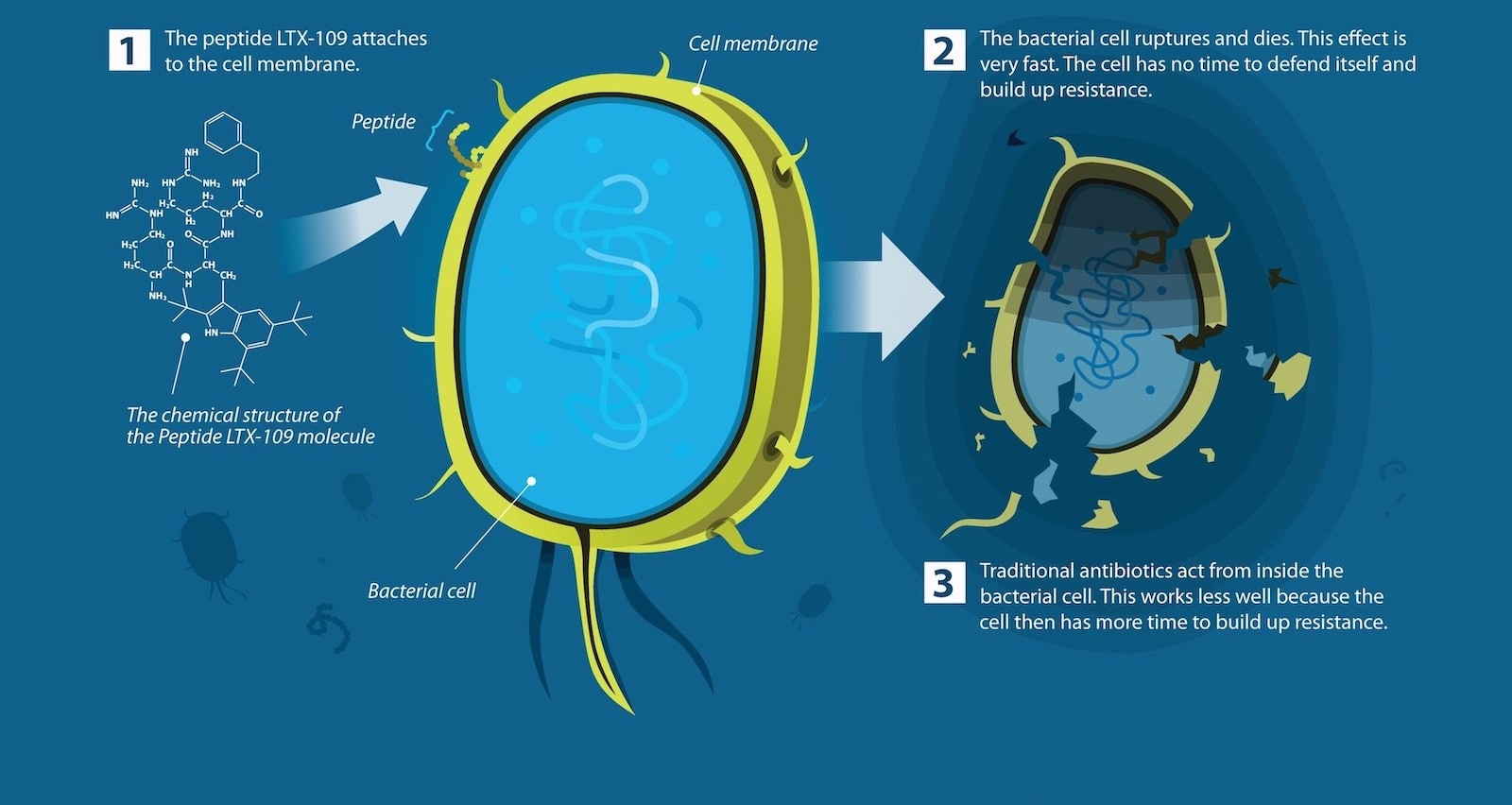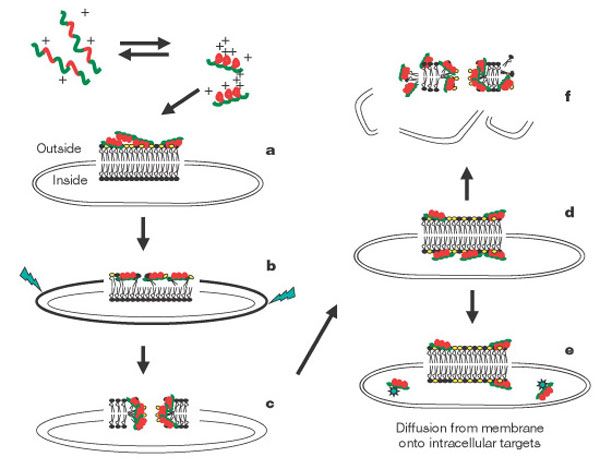Acive ingredient
Technology
Bacterial resistance to antibiotics and the unmet need for an efficacious treatment option against respiratory viral pandemics, are both major and fast-growing health concerns
- Pharma Holdings is addressing the problem with its drugs derived from host defence peptides through Structure-activity-relationship studies on Lactoferricin.
- Pharma Holdings’ infection drug candidate degrades the membranes of microorganisms
- Pharma Holdings’ current focus is on topical treatment of both bacterial and viral infections (e.g Influenza)
- Pharma Holdings’ infection drug candidate has proven efficacy against a broad range of resistant organisms
LTX-109 highlights:
- A synthetic protein fragment; a peptidomimetic
- High stability against degradation
- Produced in large scale
- Low propensity for resistance development
- Rapid mode of action
- Broad spectrum antimicrobial activity
LTX-109 is an investigational antimicrobial drug with a novel membrane-lysing mechanism of action, based on the biological principle of innate immune effectors, lytic peptides. The drug has a very rapid bactericidal and virucidal activity. The drug has been tested in vitro and in vivo models and has undergone a comprehensive nonclinical safety and toxicology program and been studied in man in a Phase I study, three Phase I/IIa studies and one Phase II study.

LTX-109 structure
Mechanism of Action
The antimicrobial mode of action of LTX-109 represents a highly beneficial strategy for killing bacteria and other microorganisms. The diagram below demonstrates the mechanism of action for LTX-109 lysis of bacterial membranes.

The Shai-Matsuzaki-Huang model of the
mechanism of action of an antimicrobial peptide
Transient pores form at this stage. d, Transport of lipids and peptides into the inner leaflet. e, Diffusion of peptides onto intracellular targets (in some cases). f, Collapse of the membrane into fragments and physical disruption of the target cell’s membrane. Lipids with yellow headgroups are acidic, or negatively charged. Lipids with black headgroups have no net charge.
From the following article:
Antimicrobial peptides of multicellular organisms
Michael Zasloff
Nature 415, 389-395(24 January 2002)
doi:10.1038/415389a

Shai-Matsuzaki-Huang model
Zasloff M., Nature, 415,389-395
Pharma Holdings IP Rights
Pharma Holdings has secured broadly defined rights to our new class of cationic antimicrobial peptides– harnessing the essence of naturally occurring host defense molecules and designing around the potential instability challenges linked with antimicrobial peptides. We are also actively exploring new patent applications to prolong and expand our IPR. Two patents are already granted, and three new IP filings will reach the PCT filing stage during 2022.